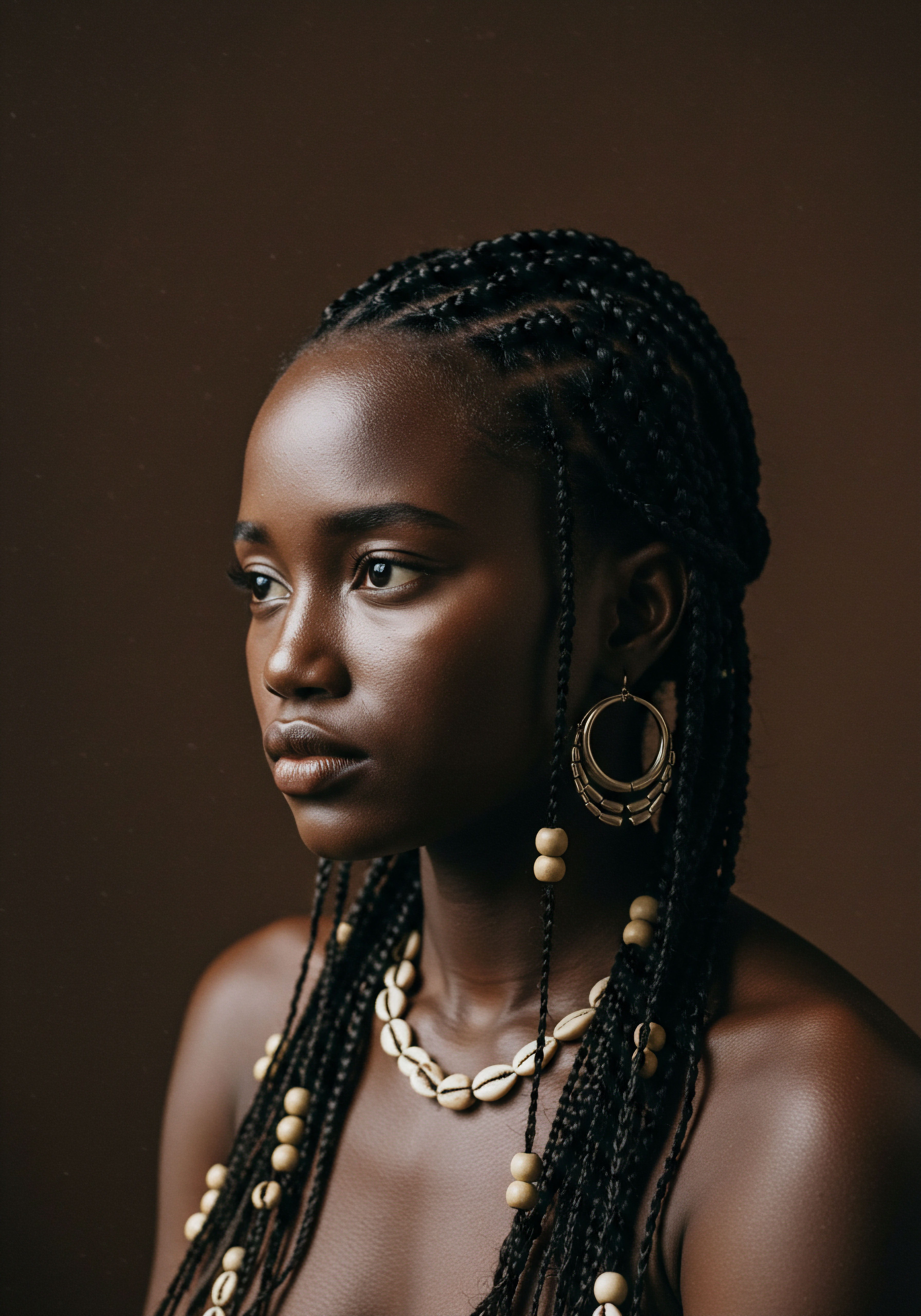
Roots
The quiet conversation held by every strand of hair, particularly textured hair, whispers stories of lineage, of sun-drenched lands, and of journeys undertaken not just by people, but by ideas, by materials, and by the very aesthetic of beauty. Before the compass spun global trade routes into being, African hair adornments spoke a profound language, a visual lexicon of status, identity, age, and spiritual connection. These were not mere decorative elements; they served as living canvases, each coil and braid a deliberate stroke in a larger cultural portrait. The intricate artistry of pre-colonial African hair, often incorporating elements from the immediate natural surroundings, laid the foundational principles upon which subsequent influences would subtly, yet powerfully, impress their mark.
Consider the earliest expressions of hair artistry across the continent. In regions spanning the Sahara to the verdant forests, hair was a medium for communication, a repository of communal knowledge. Styles indicated marital status in some societies, while in others, they signaled readiness for war or marked passage into adulthood.
The very act of hair dressing was a ritual, a moment of bonding and knowledge transfer, often performed by elders, carrying with it generations of wisdom about scalp care, styling, and the symbolic weight of each chosen form. This deeply rooted connection to identity and tradition meant that any external influence, particularly those brought by the flow of commerce, would be absorbed and reinterpreted through a distinctly African lens.

Early Adornment Materials and Their Origins
Before the advent of widespread long-distance trade, the materials gracing African hair were predominantly sourced from local environments. This included everything from plant fibers, seeds, and animal bones to shells gathered from nearby coasts or rivers. Pigments derived from plants and minerals lent color, while oils and butters from indigenous flora provided sheen and nourishment.
- Plant Fibers ❉ Used for extensions, braiding, and creating voluminous shapes.
- Seeds and Nuts ❉ Often strung together to create rattles or decorative elements.
- Animal Bones and Teeth ❉ Carved into combs, pins, or pendants, signifying prowess or spiritual connection.
- Local Shells ❉ Employed for their beauty and sometimes their symbolic value, particularly near coastal communities.
The methods of preparation for these natural elements were themselves a testament to ingenious local craftsmanship. Shells might be polished, seeds drilled, and fibers softened through laborious processes, all contributing to the unique character of each adornment. This deep understanding of local resources shaped the initial aesthetic landscape of African hair.
African hair adornments, deeply tied to identity and social communication, formed a complex cultural language long before external trade routes began to leave their impressions.
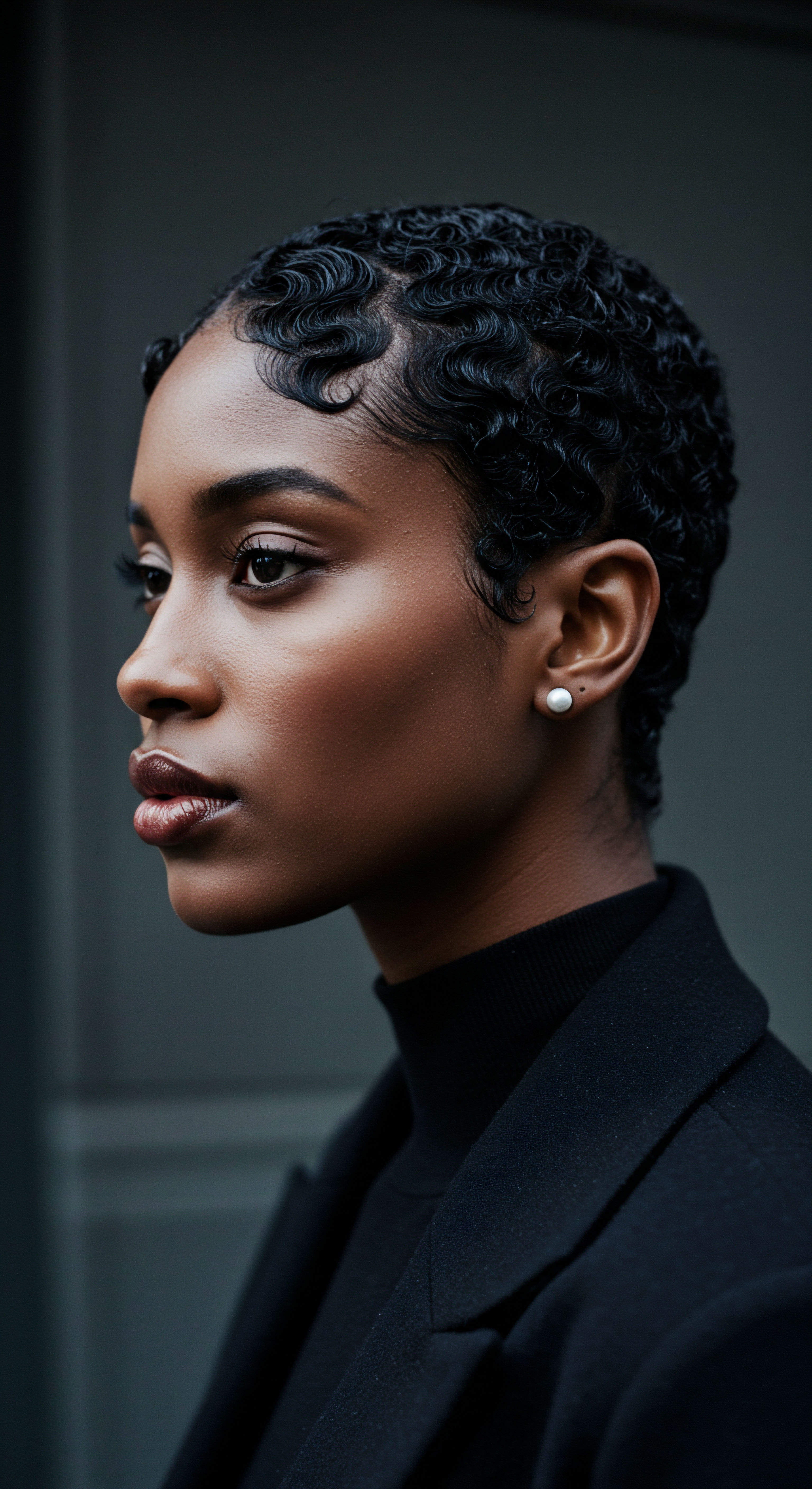
How Did Ancient Trade Routes Shape Material Access?
The earliest trade routes, such as the trans-Saharan paths, were not simply conduits for gold and salt; they were arteries of cultural exchange. Long before European ships arrived, goods and ideas traversed vast distances within Africa and between Africa, the Middle East, and Asia. This initial movement of goods introduced materials previously unavailable to certain regions, sparking new creative possibilities for hair artistry. For instance, regions far from coastlines gained access to marine shells, which quickly became highly valued.
The expansion of these ancient networks meant that adornments, once exclusively local, began to incorporate elements from distant lands. This gradual integration of external materials, however, was often selective, with communities choosing to adopt only those elements that aligned with existing cultural values or offered new symbolic meaning. It was a careful negotiation between the familiar and the foreign, setting the stage for more profound transformations.
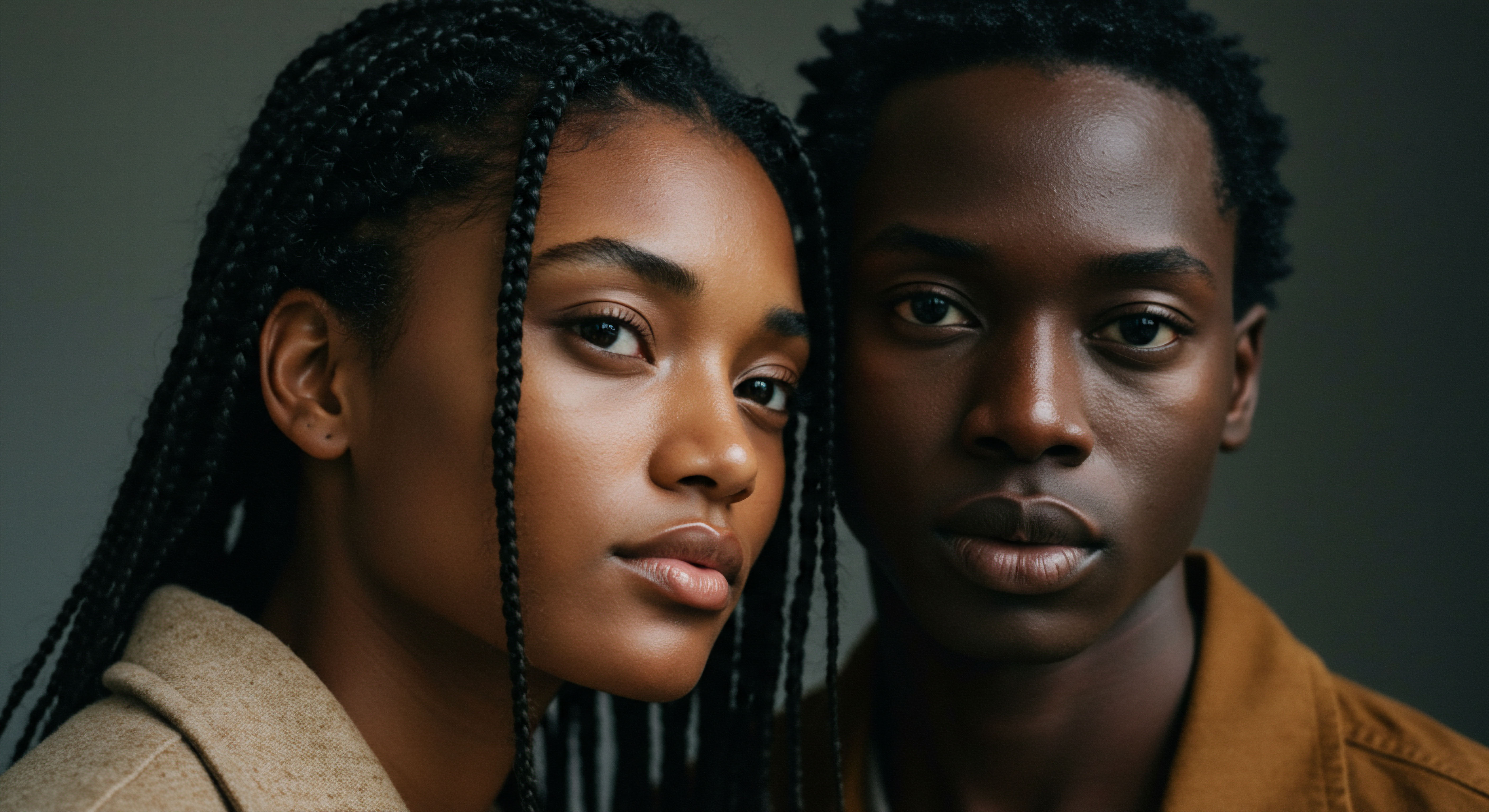
Ritual
As we step from the foundational elements into the daily rhythm of hair care and styling, we begin to perceive how practical wisdom intertwines with deeper cultural currents. The methods and materials used in African hair adornments were never static; they were dynamic expressions, constantly absorbing and reinterpreting external influences. Trade routes, far from being mere commercial arteries, became cultural conduits, subtly yet significantly altering the palette and practice of hair artistry across the continent. The introduction of new goods through these channels often prompted a re-evaluation of existing aesthetic norms, sometimes elevating new materials to positions of high status or ritual significance.
Consider the meticulous processes involved in creating and maintaining traditional African hairstyles. These were often time-intensive, communal activities, requiring specific tools and adornments. When trade brought new items, they were not simply added; they were integrated, sometimes replacing older materials, other times creating entirely new stylistic possibilities.
This integration was not haphazard; it followed established cultural patterns and symbolic meanings, allowing for the continuation of tradition while permitting innovation. The practical application of these new materials, whether beads, cowrie shells, or metals, spoke volumes about their perceived value and their capacity to enhance or transform existing beauty practices.

The Introduction of External Materials
The movement of goods along historical trade routes, particularly the trans-Saharan and Indian Ocean networks, brought a diverse array of materials into African communities. These included precious metals, glass beads, and various shells.
- Glass Beads ❉ Beads from Venice, India, and other regions became highly prized. Their vibrant colors and smooth textures offered a distinct contrast to locally produced beads, leading to their widespread adoption in hair braiding and ornamentation.
- Cowrie Shells ❉ Originating primarily from the Indian Ocean, cowrie shells gained immense popularity across West and Central Africa. Beyond their use as currency, they were extensively incorporated into hair designs, symbolizing wealth, fertility, and spiritual protection.
- Metals ❉ Copper, brass, and later, silver and gold, traveled along these routes. These metals were crafted into rings, coils, and pendants that adorned braids and dreadlocks, signaling status and affluence.
The aesthetic impact of these imported materials was immediate and profound. They offered new textures, colors, and forms, expanding the creative possibilities for hair artists. A shift began to occur, where the presence of certain imported elements in one’s hair could visibly communicate one’s connection to wider trade networks and the wealth they represented.

Did Trade Routes Change the Social Value of Hair Adornments?
Indeed, the influx of materials via trade routes significantly altered the social value and symbolism associated with hair adornments. Materials that were once rare or exclusive to certain regions became more accessible, though often still controlled by elite groups who managed trade. This increased availability could sometimes democratize certain styles, while at other times, it solidified new hierarchies.
For instance, while indigenous beads held traditional significance, the brilliance and perceived exoticism of imported glass beads could elevate a hairstyle’s prestige. In some societies, the quantity or specific type of imported bead worn in the hair became a direct indicator of wealth and social standing. This was particularly true for items like certain Venetian glass beads, which were not merely decorative but functioned as a form of liquid wealth.
Trade routes introduced novel materials that transformed hair adornments, subtly shifting their aesthetic and reinforcing new social distinctions within communities.
The transformation extended beyond mere aesthetics. The adoption of new materials sometimes led to the development of new hair care techniques or the adaptation of existing ones to accommodate the weight or structure of the foreign elements. Hairdressers and artisans had to innovate, ensuring that the new adornments could be securely and comfortably integrated into elaborate styles, thus pushing the boundaries of traditional hair artistry.

Relay
To truly grasp the profound and enduring influence of historical trade routes on African hair adornments, one must move beyond the surface of material exchange and consider the intricate interplay of cultural adaptation, economic dynamics, and shifting symbolic landscapes. This exploration requires a deeper dive into how seemingly disparate elements—a trade commodity from distant shores, a local artisan’s skill, and a community’s cultural values—converged to shape a distinct aesthetic narrative. The impact was not a simple addition of new components; rather, it was a complex process of assimilation and reinterpretation, where the foreign became intimately woven into the fabric of indigenous identity and expression.
The narrative of African hair adornments, when viewed through the lens of trade, reveals layers of resilience and ingenuity. Communities did not passively receive foreign goods; they actively engaged with them, assigning new meanings, adapting existing practices, and sometimes even creating entirely new forms of artistry. This dynamic process speaks to the inherent adaptability of African cultures, demonstrating how external stimuli can be absorbed and transformed to strengthen, rather than diminish, cultural identity. Understanding this complex relay of influence provides a richer appreciation for the depth and sophistication of African hair traditions.

The Economics of Adornment and Trade
The economic underpinnings of trade routes directly impacted the accessibility and value of hair adornment materials. For instance, the trans-Saharan trade , active for centuries before European maritime routes, facilitated the movement of goods like salt, gold, textiles, and also, crucially, glass beads and cowrie shells. These items, once introduced, could become powerful economic indicators.
Consider the impact of cowrie shells (Cypraea moneta and Cypraea annulus) . While indigenous to the Indian Ocean, their presence in West Africa was almost entirely due to trade. By the 14th century, they were used as currency in Mali and later across much of West Africa. Their value fluctuated based on supply from trade routes, often controlled by powerful empires or merchants.
As a direct consequence, the incorporation of cowrie shells into hairstyles, once perhaps a sign of rarity or spiritual connection, evolved to overtly signify wealth and economic standing. The sheer quantity of shells adorning a hairstyle could indicate the wearer’s affluence, reflecting their access to trade networks. This tangible link between currency and aesthetic is a powerful example of trade’s influence.
The influx of trade goods like cowrie shells transformed hair adornments into visible markers of economic standing and connection to wider commercial networks.
A study published in the Journal of African History examined the distribution of cowrie shells in archaeological sites across West Africa, correlating their density with historical trade routes and periods of economic prosperity. This research suggested a clear pattern ❉ areas with stronger links to trans-Saharan and later, Atlantic trade, exhibited a higher prevalence of cowrie shell adornments, often in more elaborate configurations. This empirical observation solidifies the argument that trade was not merely a source of new materials, but a catalyst for new forms of social signaling through hair.

How Did Cultural Syncretism Shape Hair Artistry?
Beyond the purely economic, trade routes fostered cultural syncretism, where distinct traditions blended, resulting in novel forms of expression. Hair adornments became a particularly visible arena for this phenomenon. When foreign materials arrived, they were rarely adopted wholesale without modification. Instead, they were reinterpreted through existing aesthetic frameworks and symbolic systems.
For example, Venetian glass beads, arriving via maritime trade, were often seen as a superior alternative to local clay or seed beads due to their durability, color vibrancy, and uniform shape. However, their use in hair was not simply an imitation of European styles. African artisans and wearers integrated these beads into traditional braiding patterns, coiling techniques, and headwraps, creating hybrid styles that were distinctly African but bore the subtle mark of global exchange. This process demonstrates a sophisticated cultural agency, where external influences were actively domesticated and made to serve local expressions of beauty and identity.
The impact of the transatlantic trade, though often devastating in its human cost, also inadvertently facilitated the movement of certain hair care practices and adornment styles within the African diaspora, and back to the continent in modified forms. For instance, some braiding techniques or the use of certain protective wraps, adapted in the Americas, found their way back to parts of Africa through returning individuals or cultural exchange, creating a cyclical flow of influence that was complex and deeply rooted in shared heritage. This ongoing dialogue between diaspora and continent further underscores the dynamic and interconnected nature of African hair artistry.
| Trade Route Type Trans-Saharan Trade |
| Key Adornment Materials Introduced Cowrie shells, specific glass beads, certain metals |
| Shifts in Symbolic Meaning/Use Cowrie shells transition from spiritual token to overt currency and wealth indicator; new beads signify expanded status. |
| Trade Route Type Indian Ocean Trade |
| Key Adornment Materials Introduced Cowrie shells, Asian silks, Indian glass beads |
| Shifts in Symbolic Meaning/Use Increased availability of cowries solidifies their role as currency and adornment; exotic silks for headwraps gain prestige. |
| Trade Route Type Transatlantic Trade |
| Key Adornment Materials Introduced European glass beads, certain textiles, metal ornaments |
| Shifts in Symbolic Meaning/Use Mass-produced beads sometimes dilute traditional bead value but become new markers of wealth; diaspora hair practices influence continental styles. |
| Trade Route Type Historical trade routes profoundly reshaped the materials, meaning, and aesthetic of African hair adornments. |
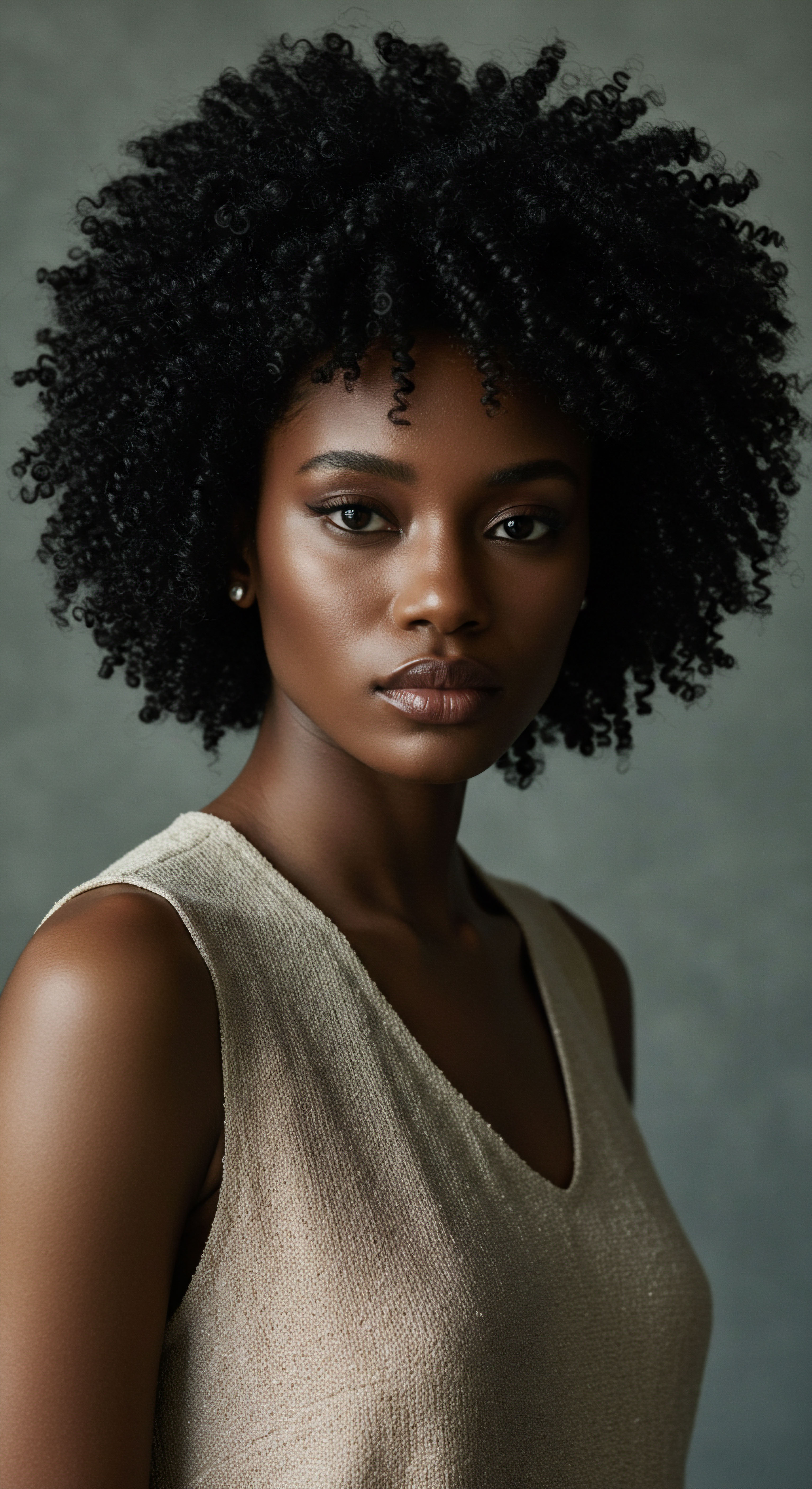
The Lasting Echoes in Contemporary Styles
The historical dialogue between African hair adornments and trade routes continues to resonate in contemporary practices. Many modern styles, while appearing fresh and innovative, carry echoes of these ancient exchanges. The preference for certain types of beads, the continued use of cowrie shells, or the very concept of hair extensions, all possess historical roots that stretch back to periods when new materials and ideas flowed across continents. This historical depth provides a rich context for understanding the enduring cultural significance of African hair.
The globalized world of today, with its instantaneous exchange of trends and materials, is merely an accelerated version of what began centuries ago. The historical trade routes laid the groundwork for a globalized aesthetic, demonstrating how African hair artistry has always been, and remains, a dynamic and adaptable form of cultural expression, capable of absorbing and transforming external influences into something uniquely its own.

Reflection
To gaze upon the adorned head of an African elder, a vibrant youth, or a photograph from generations past, is to witness a profound chronicle. Each braid, each coil, each carefully placed shell or bead, is not merely an aesthetic choice; it is a whisper of ancestral wisdom, a testament to resilience, and a visible record of global connections. The influence of historical trade routes on African hair adornments extends far beyond the simple introduction of new materials.
It speaks to a continuous, vibrant conversation between local ingenuity and distant shores, a dialogue that shaped not only how hair looked, but what it meant. It reminds us that beauty, particularly in its textured forms, is a living, breathing history, constantly adapting, yet always rooted in its magnificent origins.
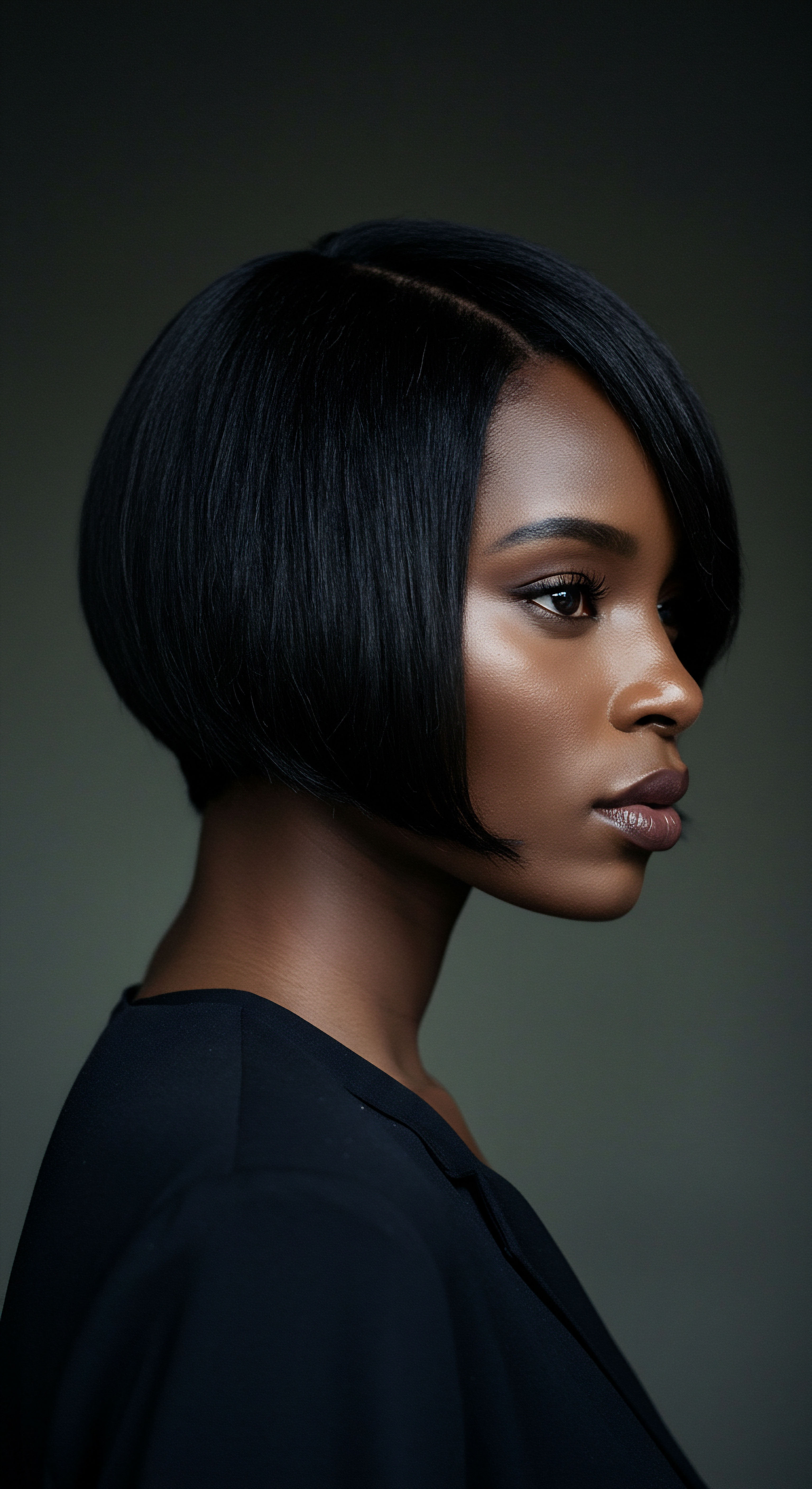
References
- Kreamer, Christine Mullen. African Cosmos ❉ From the Ancestors to the Stars. National Museum of African Art, Smithsonian Institution, 2012.
- Perani, Judith, and Fred T. Smith. African Art and Culture. Pearson Prentice Hall, 2007.
- Roberts, Allen F. and Mary Nooter Roberts. A Sense of Wonder ❉ African Art from the Faletti Family Collection. University of Washington Press, 2005.
- Spring, Christopher. African Textiles Today. Smithsonian Books, 2012.
- Walsh, Gretchen. The Cultural History of Hair. Berg Publishers, 2009.
- Vansina, Jan. Paths in the Rainforests ❉ Toward a History of Political Tradition in Equatorial Africa. University of Wisconsin Press, 1990.
- Boahen, A. Adu. Topics in West African History. Longman, 1986.
- Curtin, Philip D. Cross-Cultural Trade in World History. Cambridge University Press, 1984.
- Lovejoy, Paul E. Transformations in Slavery ❉ A History of Slavery in Africa. Cambridge University Press, 2012.
- Goucher, Candice L. and Linda A. Walton. World History ❉ Journeys from Past to Present. Routledge, 2013.